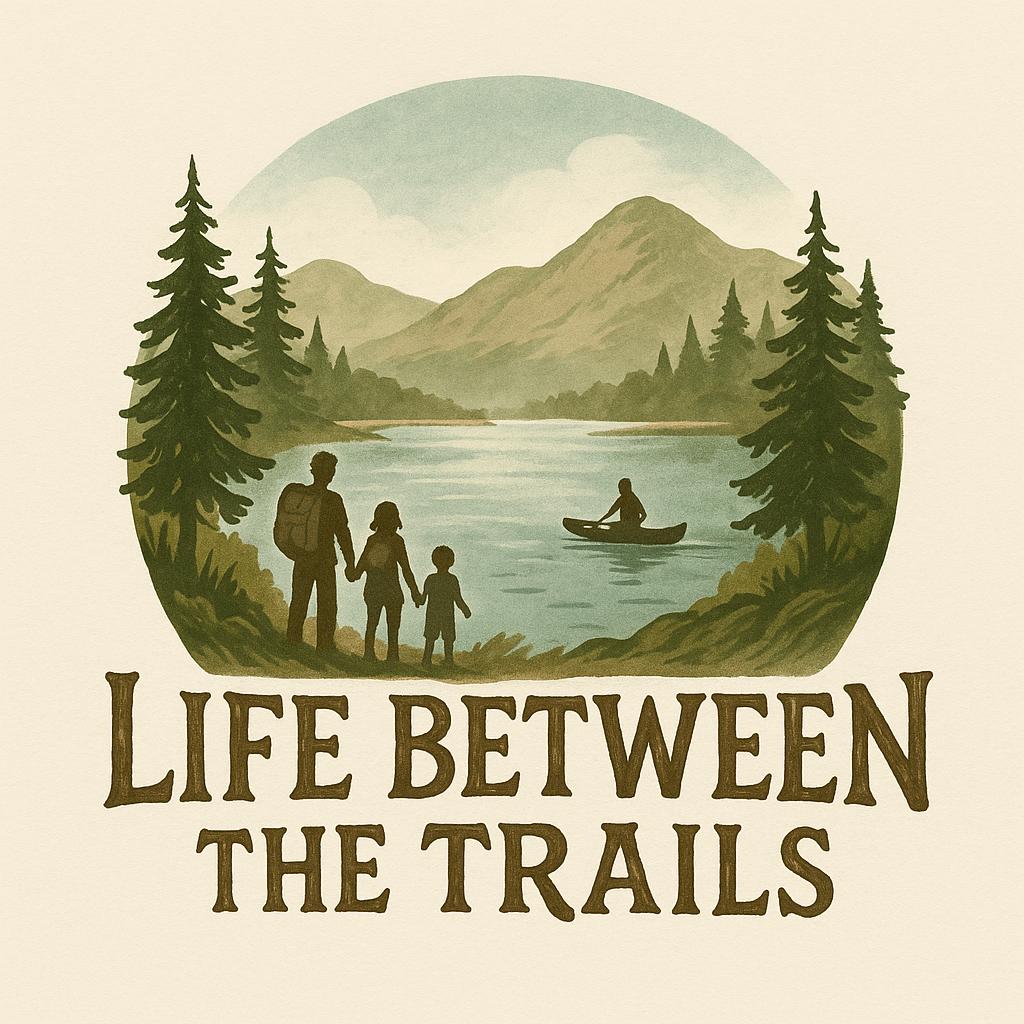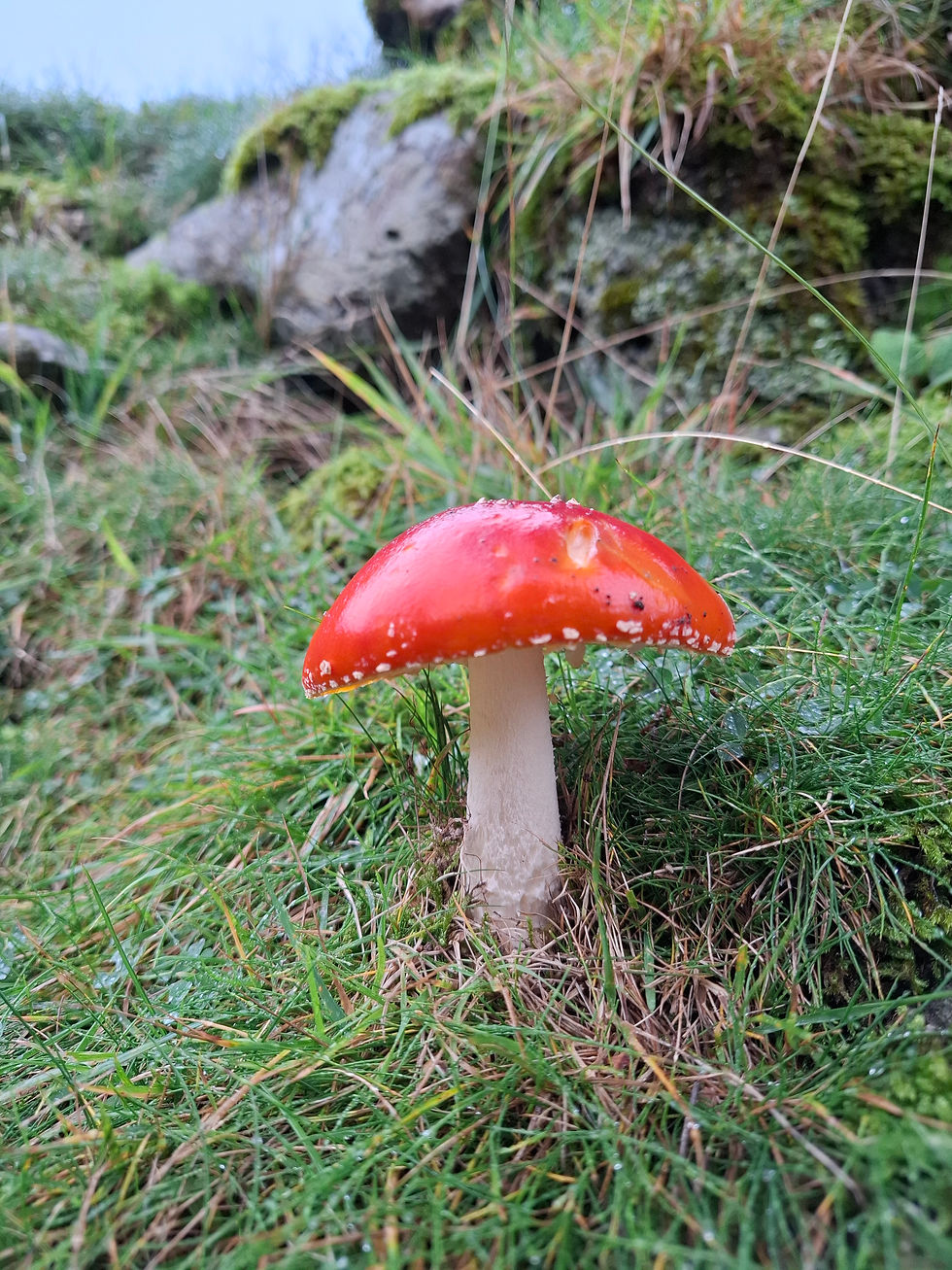Nurturing Growth: Encouraging Your Children’s Mental and Physical Development Through Outdoor Adventures
- Life Between The Trails

- Sep 15
- 4 min read
When I think back to my happiest childhood moments, most of them happened outdoors—muddy boots, messy hair, and big smiles. And now, as a parent, I see how those same kinds of experiences shape my children’s growth too. Though initially it can sometimes be a challenge to get them out of the door, moans and groans and "I'm too tired". Pushing through that initial hurdle, once they're out there taking it all in there's a visual shift in their presentation—smiles and laughter and curiosity. Ending with "Thank yous" and "I enjoyed that". Thinking back (and if you asked my parents), I was much the same as a little adventurer.
Outdoor adventures don’t have to be grand or far away; sometimes they’re as simple as feeding ducks at the park or lying in the forest together spotting shapes in the tree canopy. These moments not only bring joy but also nurture children’s bodies, minds, and imaginations.

Why Outdoor Adventures Matter
Boosts Physical Health:
Running through woods, climbing rocks, and splashing in streams build strength, stamina, and coordination. Adventures like hiking up Coniston or even tackling Helvellyn as a family (with plenty of snack breaks!) show children what their bodies are capable of and give them a sense of achievement. From an occupational therapy perspective, these activities also strengthen balance, core stability, and motor planning—skills children need not just for sports, but for everyday life like sitting upright at a desk or carrying a school bag.

Supports Mental Well-Being:
Nature has a way of calming the mind. I’ve found that even a simple dog walk can ease tension and spark conversations that wouldn’t happen at home. Outdoor play also supports sensory regulation, helping children process sights, sounds, and movement in a way that promotes calm and focus.
Sparks Curiosity and Creativity:
Whether it’s building dens out of branches in the woods, spotting insects under rocks, or pretending sticks are pirate swords, children’s creativity comes alive outdoors. These activities also develop fine motor skills (like grip and hand strength) and problem-solving abilities as they experiment with materials and ideas.

Fosters Independence and Confidence:
I’ll never forget the pride on my kids’ faces when they made it to the summit of a hike or managed to balance across a stream without falling in. These “small wins” fuel their self-confidence. From an OT point of view, mastering these physical challenges also supports resilience, perseverance, and body awareness—all vital for growing independence.

Strengthens Family Bonds:
From laughing while trying to feed ducks who are far too cheeky, to sharing hot chocolate after a walk, outdoor experiences create memories that bring families closer.
Tips for Encouraging Outdoor Adventures
1. Start Small and Local
Adventures don’t always require mountains. Walking the dog around the block, stopping to look at plants, or visiting the nearest duck pond can be just as magical.
2. Make It Playful
Encourage children to get hands-on: build a den, float sticks in a stream, or collect leaves for art projects. These simple activities turn the outdoors into their playground.

3. Celebrate Achievements
Whether it’s reaching a mountain top like Helvellyn or simply managing a long woodland walk without complaints, mark the milestone with praise, photos, or a special treat.
4. Create Moments of Stillness
Some of the most powerful connections happen when we slow down—lying on our backs in the forest, spotting shapes in the leaves, or listening to birdsong. Teach your children the joy of simply being present.

5. Learn Together
Use outings as opportunities to explore nature’s classroom. Look up plants, identify birds, or talk about how ecosystems work. Children love discovering new facts, especially when you’re learning alongside them.

6. Mix Routine with Adventure
Regular walks or park visits build consistency, while bigger adventures—like camping weekends or mountain hikes—add excitement and variety. Both play an important role in nurturing growth.
Adventure Ideas to Try
Play in Streams:
Skip stones, paddle barefoot, or race sticks downstream. Great for balance, coordination, and sensory exploration.
Woodland Dens:
Gather branches and leaves to make hideouts and secret bases—perfect for teamwork, problem-solving, and strengthening muscles.
Mountain or Hill Walks:
Start small, then build up to bigger challenges. The pride from reaching the summit is unforgettable.
Duck Feeding Trips:
Bring some healthy duck food and enjoy a simple outing that delights younger kids while building hand-eye coordination.
Forest Spotting:
Lie down together and look for faces, animals, or patterns in the trees—great for mindfulness and visual perception skills.
Nature Study:
Bring a pocket guide or app to identify plants, bugs, or birds along the way, encouraging curiosity and focus.
Final Thoughts
Outdoor adventures don’t have to be extravagant to be meaningful. Some of my children’s best memories come from muddy stream banks, forest dens, and everyday walks. Whether you’re climbing Coniston, feeding ducks at the pond, or lying in the woods spotting shapes in the leaves, these moments help children grow stronger, happier, and more connected—to nature and to you. And from an OT perspective, they’re also helping children develop balance, coordination, sensory skills, and resilience—all while having fun.




Comments